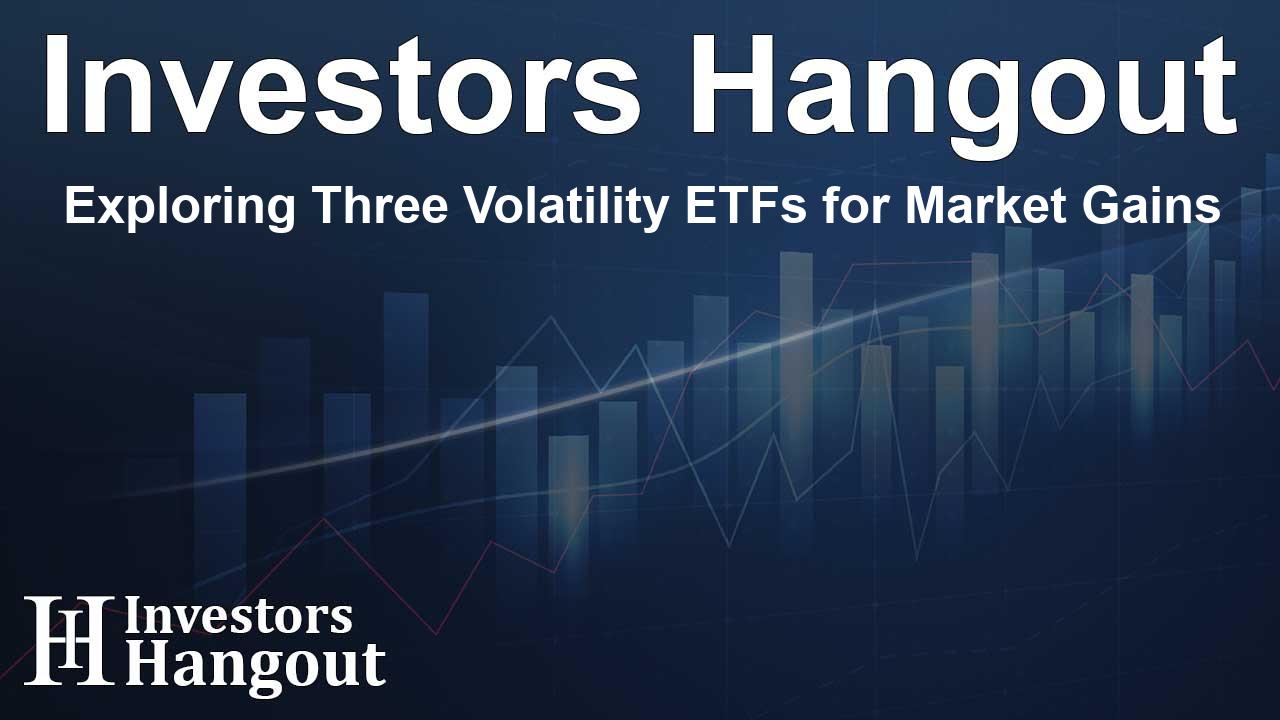Understanding Market Volatility
Market volatility signifies the degree of price fluctuations that can occur for assets. Typically, volatility and stock market trends have an inverse relationship. When stock prices soar, volatility often diminishes as investor confidence rises. However, when stock values decline, fear re-emerges, causing volatility to spike as investors adopt a more cautious approach.
A key indicator of market volatility is the CBOE Volatility Index, commonly known as the VIX. This "fear gauge" reflects market sentiment surrounding anticipated fluctuations, particularly in the S&P 500 index based on options prices. A VIX reading above 25 or 30 usually indicates heightened market fear, while a reading below 15 or 20 suggests calmer market conditions.
Volatility Exchange-Traded Funds (ETFs) allow investors to gain exposure to market volatility primarily through VIX futures contracts. Let’s delve into three notable ETFs linked to the S&P 500 VIX Short-Term Futures Index, which can assist in navigating a turbulent market landscape:
1. ProShares VIX Short-Term Futures ETF
The ProShares VIX Short-Term Futures ETF (NYSE: VIXY) focuses on tracking front-month VIX futures contracts. It provides investors with direct exposure to short-term market volatility, serving as a hedge against potential downturns in the stock market. This ETF is aimed at those wanting a straightforward, non-leveraged option for volatility exposure, unlike more complex alternatives like UVXY.
Investors should note that VIXY often suffers from value decay due to the contango effect in VIX futures—a situation where future prices are higher than present ones. As a result, this ETF may be more suitable for short-term trades. During periods of low volatility, VIXY can decline consistently, even in the absence of significant market movements.
2. ProShares Ultra VIX Short-Term Futures ETF
The ProShares Ultra VIX Short-Term Futures ETF (NYSE: UVXY) seeks to amplify daily volatility movements through 1.5x leveraged exposure to short-term VIX futures. This leverage can enhance profits or losses, positioning UVXY as a higher-risk investment designed for aggressive, short-term speculation on volatility spikes.
Short-term traders can take advantage of sudden market downturns; however, this strategy requires acute timing to be effective due to the ETF's rapid decay rates. The combination of leverage and futures roll costs renders UVXY a high-stakes tool most suited for experienced traders.
3. ProShares Short VIX Short-Term Futures ETF
The ProShares Short VIX Short-Term Futures ETF (NYSE: SVXY) is designed to profit from decreasing volatility by offering inverse exposure to VIX futures. This ETF provides a risk management option for traders expecting market stabilization or declines in volatility that typically occur during bullish market phases.
Investors opting for SVXY should possess considerable expertise as its unpredictable performance can lead to significant risks. Long-lasting volatility spikes or market corrections can result in considerable losses, underscoring the necessity for effective risk management strategies.
Strategies for Capitalizing on Volatility
Successfully investing in volatility ETFs hinges on tactical, short-term trading approaches. Anticipating spikes in volatility is crucial for potential profitability, particularly during unpredictable events such as economic announcements, geopolitical tensions, or corporate earnings seasons that create market unease.
In situations where an investor predicts an upsurge in volatility, utilizing VIXY or UVXY could be advantageous. Historical performance indicates that during market stress, these ETFs can manifest substantial price increases quickly, especially considering UVXY's leverage during sharp market corrections.
Conversely, if a trader believes that the market will maintain stability, engaging with SVXY could offer profit potential. Nevertheless, this comes with elevated risks given that unexpected volatility spikes can precipitate fast and large losses when employing inverse strategies.
Managing Risks in Volatility ETF Investments
Volatility ETFs can be high-risk investments, particularly inverse and leveraged products like UVXY and SVXY. Therefore, prudent risk management becomes vital for anyone engaging in this trading arena.
- Keep Position Sizes Small: It is prudent to limit ETF investments due to potential rapid value erosion and sudden volatility spikes, ensuring they represent only a small fraction of the overall portfolio.
- Implement Stop-Loss Orders: Traders may want to use stop-loss orders to mitigate losses. However, given the volatility of these funds, execution can be challenging.
- Frequent Monitoring: Positions in volatility ETFs necessitate regular and dedicated management due to their transient nature.
- Understand Your Investments: Prior to investing, it's crucial to fully understand the intricacies associated with VIX futures, including factors like contango and time decay.
- Be Aware of Tax Implications: Take note that volatility ETFs may require the completion of a complicated Schedule K-1 tax form.
Volatility ETFs might not be suitable for every investor, particularly those less familiar with market nuances or seeking long-term investment strategies. While they provide unique avenues for potential profits amid market turbulence, the attached risks are profound and necessitate careful consideration and ongoing management.
Frequently Asked Questions
What is market volatility?
Market volatility refers to the rate at which the price of a security increases or decreases for a given set of returns. Higher volatility indicates a greater risk and potential for price swings.
How do volatility ETFs work?
Volatility ETFs aim to track prices of VIX futures contracts to provide exposure to market volatility, allowing investors to hedge against market downturns or speculate on volatility spikes.
What is the difference between VIXY and UVXY?
VIXY offers direct exposure to short-term VIX futures without leverage, while UVXY employs leverage to amplify potential returns, making it riskier and more suitable for aggressive traders.
Can SVXY be used for long-term investments?
SVXY is not ideal for long-term investments due to its inverse nature and the risk of unpredictable volatility spikes, making it suitable primarily for seasoned traders who can monitor it closely.
What tax implications should I consider with volatility ETFs?
Investing in volatility ETFs may require filling out a Schedule K-1 tax form, which is more complex than standard tax documents, potentially affecting tax reporting.
About The Author
Contact Lucas Young privately here. Or send an email with ATTN: Lucas Young as the subject to contact@investorshangout.com.
About Investors Hangout
Investors Hangout is a leading online stock forum for financial discussion and learning, offering a wide range of free tools and resources. It draws in traders of all levels, who exchange market knowledge, investigate trading tactics, and keep an eye on industry developments in real time. Featuring financial articles, stock message boards, quotes, charts, company profiles, and live news updates. Through cooperative learning and a wealth of informational resources, it helps users from novices creating their first portfolios to experts honing their techniques. Join Investors Hangout today: https://investorshangout.com/
The content of this article is based on factual, publicly available information and does not represent legal, financial, or investment advice. Investors Hangout does not offer financial advice, and the author is not a licensed financial advisor. Consult a qualified advisor before making any financial or investment decisions based on this article. This article should not be considered advice to purchase, sell, or hold any securities or other investments. If any of the material provided here is inaccurate, please contact us for corrections.

